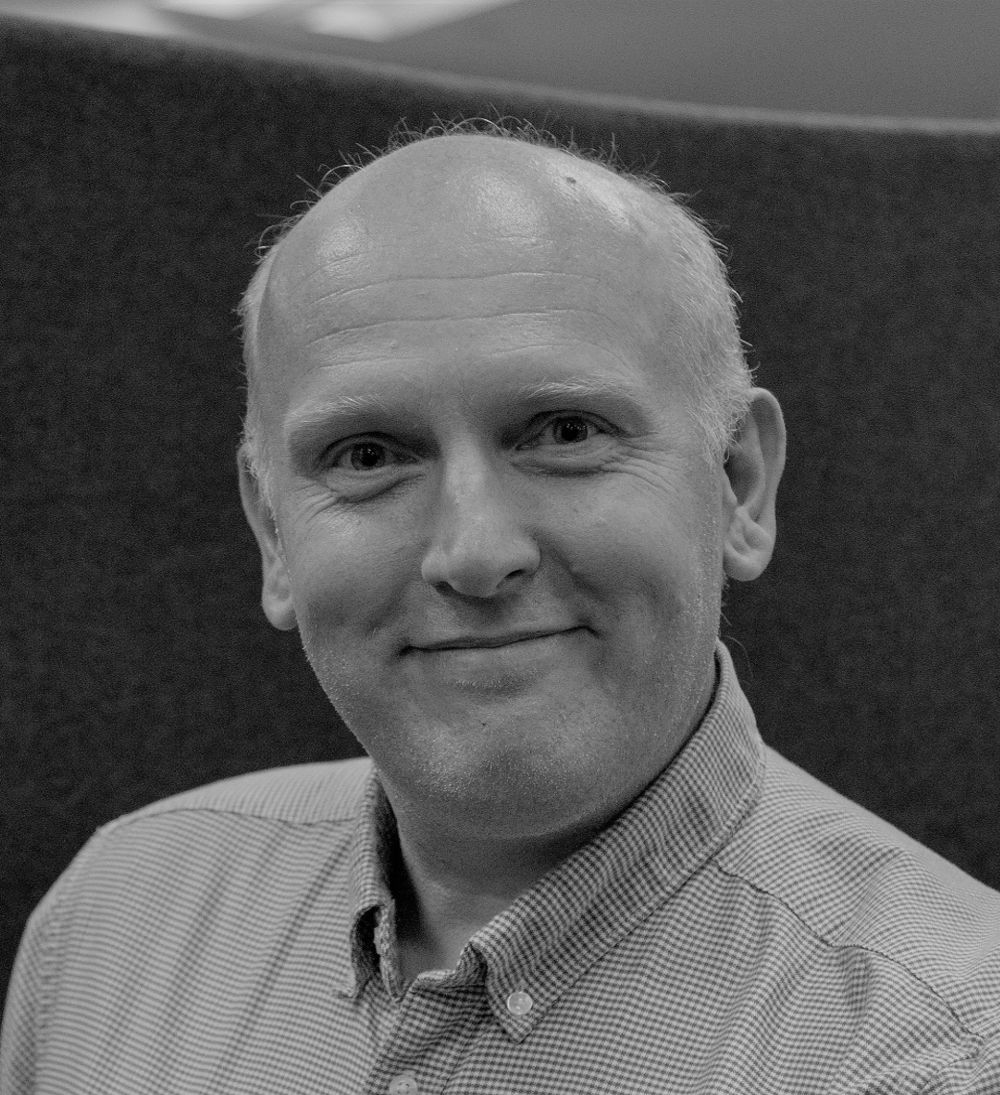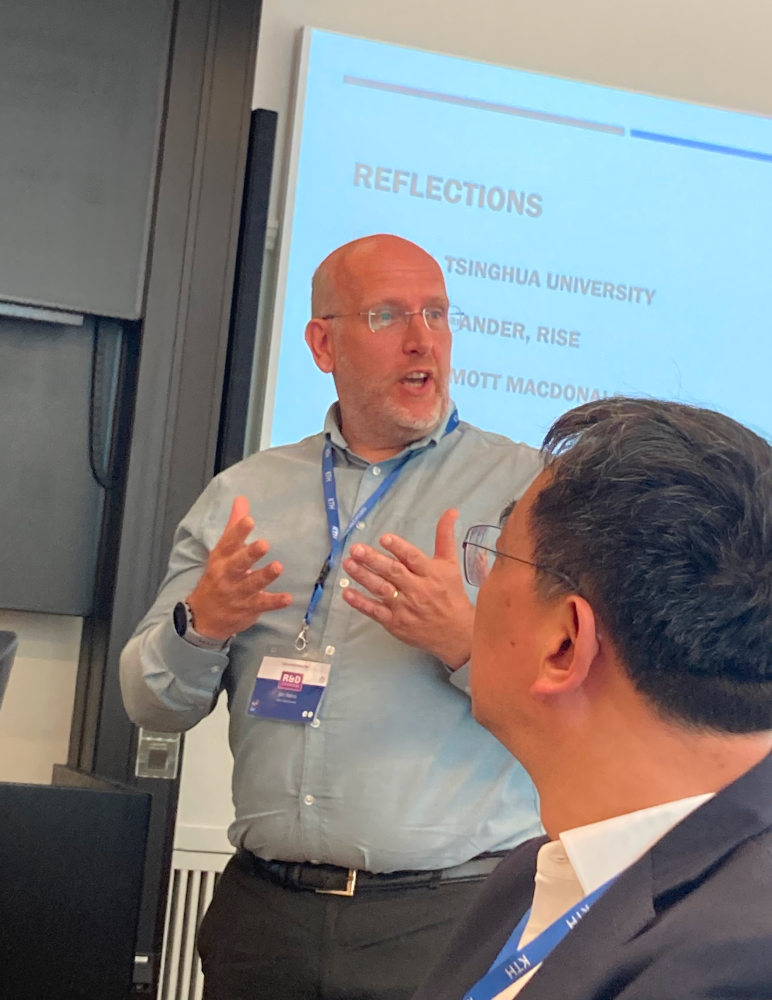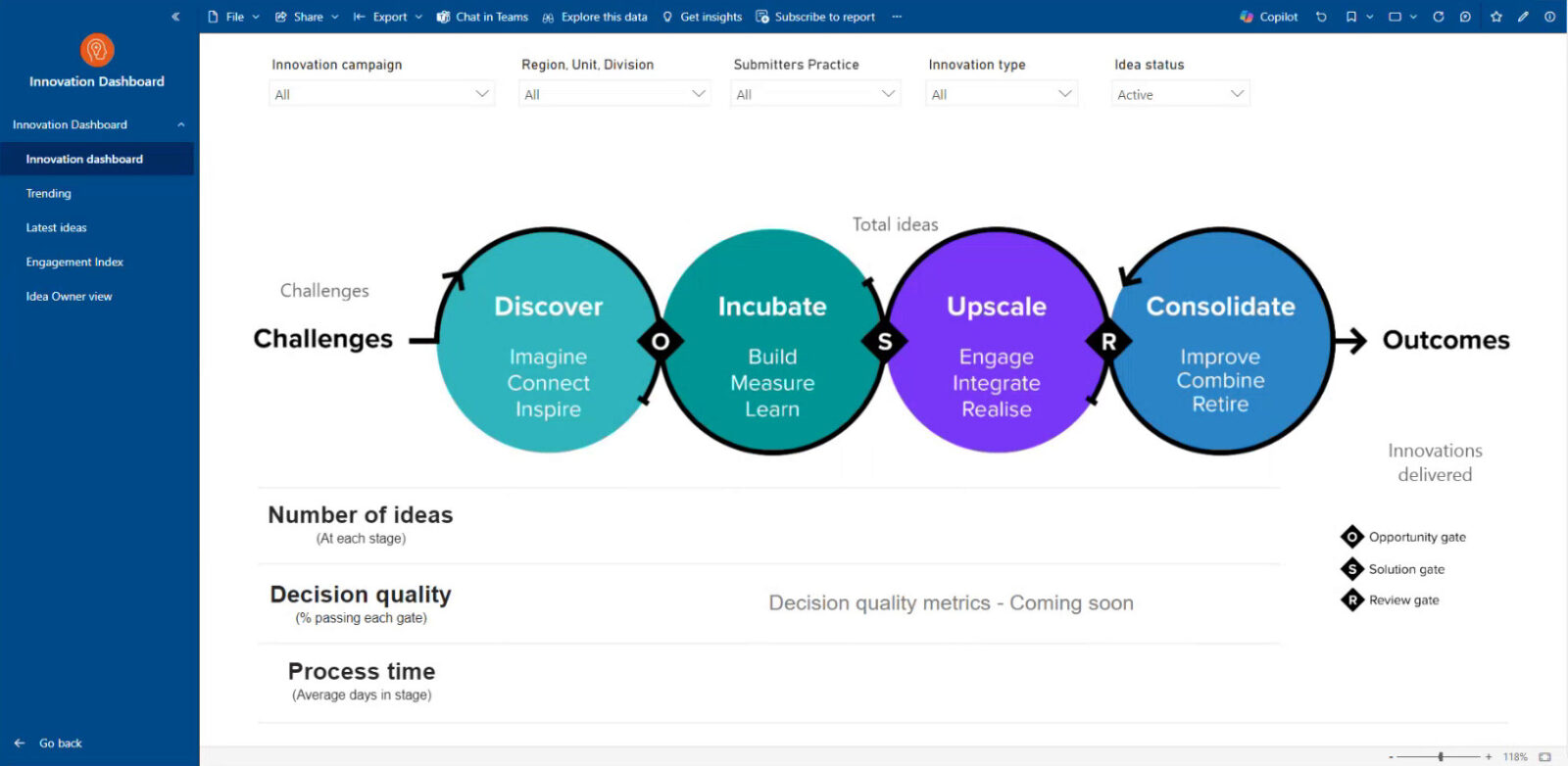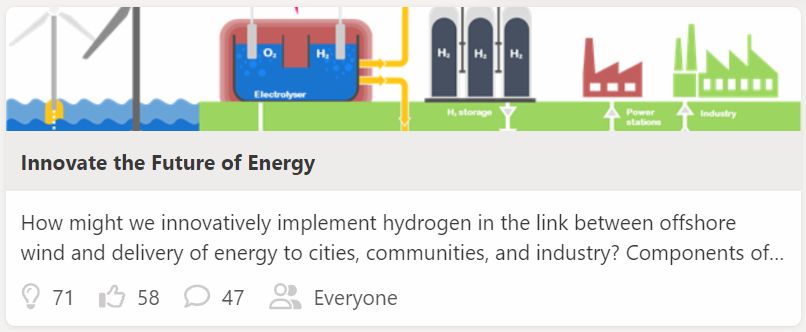For many organisations innovation happens in silos – there is poor visibility by senior management of the process and little sharing of best practice between business units. Creating a common and consistent language for describing innovation terminology is a major benefit of the ISO 56001 Innovation Management System standard.
The new standard ISO 56001 was published on 10th September, and will be launched by the BSI in London on 3rd October 2024.
Mott MacDonald was one of the first companies to adopt the IMS and here Jon Rains, Group Innovation Manager at the company, talks about his journey.
Mott MacDonald is an employee-owned engineering, development and management consultancy with over 20,000 people across 50 countries. It plans, designs, delivers and maintains infrastructure that is integral to people’s daily lives. This includes transport, energy, water and buildings.
It is always working at the forefront of innovation to solve challenges for its clients, as Jon Rains, Group Innovation Manager at Mott MacDonald, explains:
“Most projects require innovation, and our clients expect it, but there is a risk of only innovating once on the project. However, the innovation may be reused on other projects by upscaling and applying it in different geographies and adding more value for our clients.

“I was talking about this with some of my colleagues and said: ‘wouldn’t it be great if we could have an innovation management system to help our colleagues scale their great ideas?’ It wasn’t the first time I had mentioned this and our group managing director, Cathy Travers, basically said ‘okay, get on with it’.
“So, I did. After some research I enrolled in a course about Innovation Strategy, which is when I found out about the ISO Innovation Management Systems standard 56000.”
Need for an Innovation Management System
Within the multi-national Mott MacDonald, each vertical business unit has its own cost centre and staff. These are supported by 38 horizontal technical practices to share expertise in areas such as geotechnical engineering, education, structural engineering and management consulting.
Jon continues: “The company has developed many world-first innovations – but I could see there was the opportunity to move from the ‘intent to innovate’ to ‘delivery of value’ and become more systemic and systematic in our processes. This would enable the sharing of learnings and accelerate upscaling.”
Jon describes himself as being curious and always looking to improve the situation.
In a previous company he designed a new form of grit removal system for a wastewater treatment works. When it rains, sand and pebbles get washed into the sewers which flow into the treatment works and can damages the equipment if not removed. “I designed a system that used a river saltating process to remove the grit at source; it was implemented within a new treatment works in Manchester and 20 years on it is still working well.
“It provided about £1million saving by reusing existing infrastructure rather than building new, but to get the solution accepted by the organisation required numerous presentations to explain why it was a good idea and how the risk would be managed.”
Although the problem of grit is universal in the water industry – creating a huge potential market for the solution – the IP was owned by the company, and the scale-up required was not a core competency. Jon is uncertain if it was ever implemented at another plant.
It was this experience that in part drove Jon’s desire to extract greater value from the investment in innovation “to move from an unmanaged approach in response to a challenge to a more systemic and systematic approach that provides creation of value.”

Creating an Innovation Management System
Jon describes the iteration through three generations of innovation strategies – the third generation is currently being written and includes a focus on digital.
First generation: creating the framework
The first document was written somewhat in isolation, says Jon, but was “technically good”. It provided the foundations, the terminology, and identified the location of the innovation teams.
“We discovered that in the UK there were about five or six clusters of teams of, say, 20 people, who were really good at this already, and we used their input.
“We only want up to 5% of people dedicated to focused innovation development; the other 95% need to be delivering for our customers.”
The first version of the Innovation Strategy was published in early 2018, describing key roles and objectives, but it also introduced the innovation roadmap and a newly established Innovation Framework (The Innovation Management System, see below images – click to enlarge) developed by Jon together with input from other colleagues.
The Innovation Framework was used to design an innovation portal for capturing ideas and their progress. To celebrate failure, it includes options to progress or park an idea in a ‘siding’ and the process is based on the ‘double diamond’ approach for divergent and convergent thinking.
There are over 1,000 ideas being developed in the portal. These are categorised to make them easy to search and share. The portal is designed to support collaborative working, with tools to help craft the idea more successfully and stimulate thinking.
It is possible to use the dashboard to explore the portal and see if anyone across the company is working on a similar problem and to monitor the progress that has been made.
Second generation: creating buy-in
For the second iteration, Jon gained buy-in from across the company through a series of 30 workshops all over the world. He targeted invitations to those with experience, across gender and location with a heavy focus on diversity and inclusion. These individuals co-developed the strategy.
“I’m convinced that good balance was the reason why the innovation strategy was successful. Basically, people wrote it with me, and therefore it became our strategy, not my strategy.”
Mott MacDonald has a distributed, autonomous structure and the strategy was designed as guidance to provide a direction of travel rather than an instruction.
“The units were positively encouraged to adapt it. We said to them: ‘here’s a basic framework and processes and structure, and here’s the portal. You could use that. Or if you think you’re beyond this framework and you want to develop it, that’s fine, just adapt it’.
“The request was: whatever you decide, please use similar terminology because then we can have a better conversation.”
Different cultural response
An interesting discovery was the difference in cultural response across the company.
In Australia it prompted a festival of wild ideas – “a sort of hackathon”. In the United States it attracted interest and curiosity but has taken more time to gain traction. In India it revealed that hundreds of innovations were underway but there was a reluctance to communicate these until they were more developed.
“In my view it showed that you cannot have a single ‘global innovation strategy’ as there are different cultures internationally,” says Jon.
This is where he found the universal standard ISO 56000 useful as it is based on collective experiences and is objective. By providing a terminology and principles it created a common understanding.
Jon gives the example of validation: “The ISO says that to validate a concept it is useful to use more than one method to ensure rigour.”
Certification
To gain recognition for the ISO standard, Jon explored the opportunity for an assurance recognition – a Kitemark of quality from BSI (British Standards Institute) – and Mott MacDonald has become one of the first consultancies to achieve this.
“The Kitemark is a stepping stone towards accreditation; it provides evidence that we are applying a systematic approach to innovation – both internally and with external partners – and helps to ensure that we are getting all the management systems and documentation in place required for accreditation.”
Innovation Consulting Business
Although in the longer term the Innovation Management System would add value to company, in the shorter term the development required investment.
To offset this Jon has set up an Innovation Consulting Business to make the innovation activities fee-earning as well as an investment.
“Obviously, I was expecting to get challenged about the innovation portal: ‘why are you buying that system? It looks great, but what’s the value coming out at the end of it?’
“I thought if I could develop a fee-earning service then that changes the game – I’m bringing in revenue and reputational benefit for adoption of the system.
“So, we are bidding and winning projects on various clients, mainly in the UK, where they would like to improve their innovation efforts. We are helping them based on our experience of using the ISO to help them improve what they do.
“One of our recent clients wants to improve their innovation approach: they want to find safer ways of working on transportation systems. They’ve got hundreds of ideas from their own organisation, the public and their supply chain, but how do they choose the best ideas and put those through to fruition? We’ve been helping them, based on the ISO 56000, to put a system in place to do exactly that.”
Launch of ISO 56001 Innovation Management System
If you want to know more about implementing an Innovation Management System, Jon Rains is talking about his experiences at the British Standards Institute (BSI) launch of the ISO 56001 Innovation Management System on Thursday 3rd October 2024, in Chiswick, London. (read a report of the meeting here)
There are also two other events:
- Sci-Tech Daresbury near Warrington on 10th October (find out more and book here).
- Innovation Day event on 14th November at the Design Museum in London (find out more at bsigroup.com/l/35972/2024-07-09/3t7zkjn) at which Prof Magnus Karlsson will be talking.
Agenda
10:00 Opening Address – Martin McGurk, Deputy Director Business Growth, Innovate UK
10:15 Introduction to ISO 56001 followed by Q&A – Andrew Stanton, ISO/TC 279 WG 1 Convenor
11:15 Panel discussion: Case Studies
Victoria Milne, Founder, Verity Merit (Session Chair)
Jon Rains, Director of Innovation Management, Mott McDonald
Jennet Holmes, Head of Innovation, Velindre University NHS Trust
Steve Armitage, Head of Technology Design & Innovation, Heathrow
12:15 Panel discussion: Design and innovation management
Ben Watson, Chair of IMS/1 Innovation Management National Committee / Global R&D, Technology Innovation 3M
Jonathan Knight, Director, Knight Design Innovation
12:45 Closing remarks – Martin McGurk, Deputy Director Business Growth, Innovate UK
13:00 – 14:30 Networking lunch



